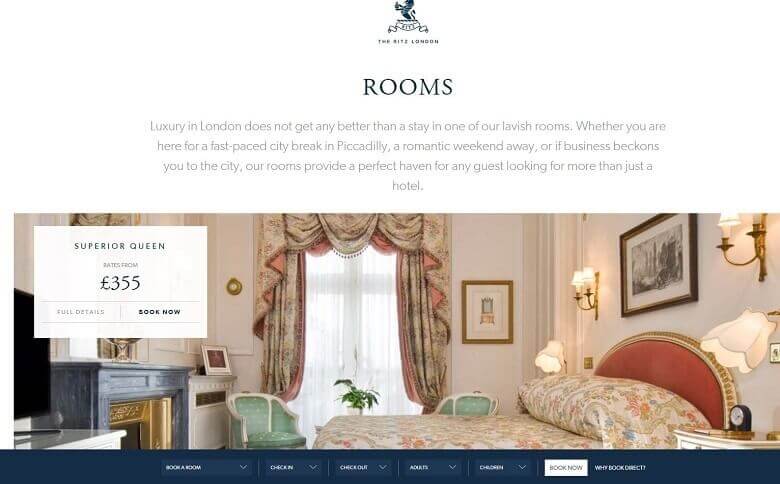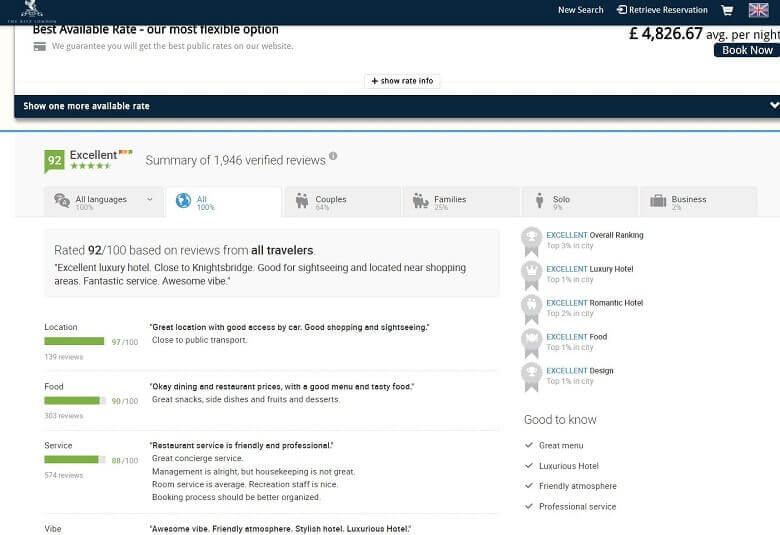
Online travel agencies (OTAs) have enjoyed huge growth over the past few years, with the majority of consumers now booking hotels and accommodation via third-party sites.
However, new research from Kalibri Labs suggests that consumer favour could in fact be be shifting, reverting back to brand hotel sites rather than OTAs.
In the analysis of the period of May to December 2016, when the hotels in question ran ‘book direct’ campaigns, Kalibri found a faster rate of growth in hotel site bookings compared to the OTA channel. This was also the case in terms of both revenue and room nights when compared to year before, (and prior to the direct booking campaigns being launched).
So, what makes consumers want to book direct rather than via a third party? Here are some examples of hotel websites I think are getting it right.
The Ritz
As one of the most well-known hotels in London, the Ritz largely relies on its prestigious reputation to drive bookings. This means that people might be more inclined to visit its website as a first port of call anyway (as opposed to a third party site). However, the Ritz still encourages direct bookings as often as possible, immediately capturing the user’s attention with a list of benefits (including lowest rates and free calls and internet).

Elsewhere, it sets out types of rooms and suites clearly, showcasing the opulence and luxury of the hotel with large and prominent imagery.

The search and booking process itself is quick and easy, with prominent reviews also being used to spur on consumers and encourage bookings.
This is perhaps surprising for a luxury hotel like the Ritz, whereby a high level of service is presumed to be standard. However, its inclusion shows how important the advocacy and influence of past customers can be – regardless of hotel heritage.

Rosewood London
A relatively new luxury hotel in London, Rosewood uses full-screen imagery to emphasise its stunning exterior and interior design.




